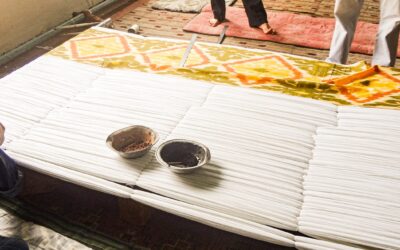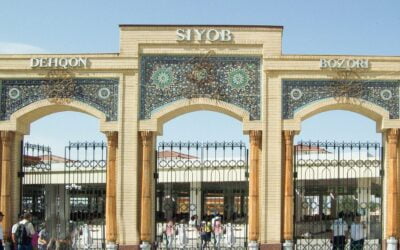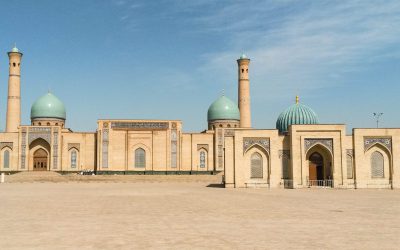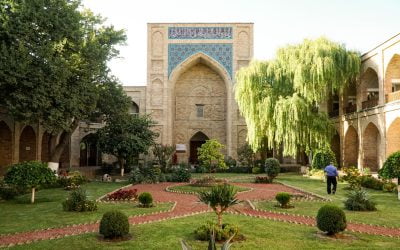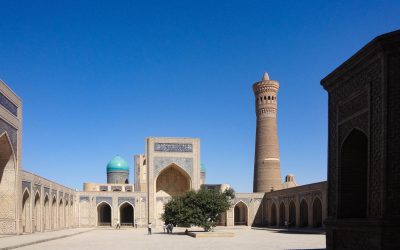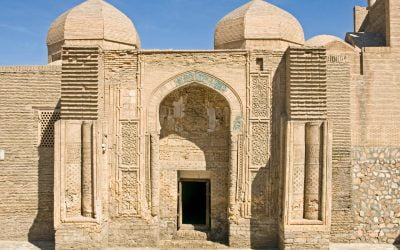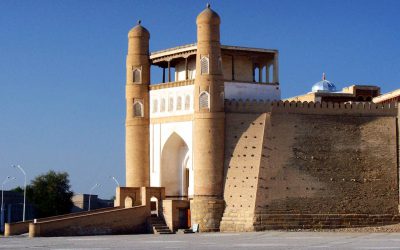KOKAND
The town of Kokand is a 4 hour drive from the capital Tashkent and lies in the mountainous Ferghana region in the east of Uzbekistan. The Jami Musjid is situated in the city center in Chorsu Square and the Palace is a 3 minute drive from there.
HERITAGE SITE | KOKAND
-
-
The Ferghana Valley is one of the most beautiful areas in Uzbekistan. Surrounded by the mountains of Tien Shan and traversed by the waters of the Syr Darya and Naryn, the valley is the fruit and cotton basket of the country.
-
The fertile belt which is only 70km wide and 300km long is surrounded by the neighbouring countries of Tajikistan, Kazakhstan and Kyrgyzstan. That has led to an interesting mix of cultures and ethnicities in the valley giving it a very unique flavour.
-
The ancient town of Khavakend which is found in the southwestern edge of the Fergana Valley was founded around the 10th century and was situated on the caravan route from India and China. Like most other cities in the region, it was destroyed by the Mongols in the 13th century.
-
The present city of Kokand developed from a fort that was constructed in 1732, and in 1740 it became the capital of the richest and the most developed khanate of Kokand. The khanate, centred on the Fergana Valley, enjoyed its greatest power in the first half of the 19th century, when it included the major part of present-day Uzbekistan, part of southern Kazakhstan, Kyrgyzstan, Tajikistan and China. Under the khans Kokand was an important centre of trade and handicrafts as well as an important religious centre in Central Asia, with more than 300 musjids and 35 madrassahs.
-
From the 1840s, however, the khanate was increasingly torn by internal strife and weakened by its rivalry with Bukhara. The Russian advance southward toward Kokand began in 1853, and the rivalry between the Bukhara and Kokand khanates prevented their uniting to resist the invaders. By 1866 the Russians had captured all the main cities of Kokand outside the Fergana Valley, including Tashkent. They finally annexed the khanate in 1876.
-
Today, many of the monuments dating back to the khan period of the 18-19th centuries, has been well-preserved and maintained. The town today is however, a subdued, polite Uzbek town its old centre hedged by colonial avenues, bearing little resemblance to the traditional, Islamic town of Bukhara.
Jami Musjid
-
The Jami Musjid is the true decoration of Kokand’s Chorsu square. According to historical chronicles of the 9th-12th centuries, there are mentions of the musjid in Kokand, which stood on the exact spot in Chorsu square. It was however also destroyed in the 13th century when the Mongols destroyed the entire city.
-
The present musjid dates back to the 19th century when the ruler of Kokand, Olimhan began the construction in 1805. Due to a lack of finances, the project was suspended but was renewed in 1814 by Umarkhan, the brother of Olimhan. He invited the talented architect of Ura-Tube to oversee the construction by the 200 talented builders who were tasked with the job. The musjid was completed two years later and soon became renowned in Central Asia for its beauty.
-
The musjid boasts a 22m tall minaret as well as a colourful 100m-long aivan (portico) supported by 98 red-wood columns which were brought from India. Each pillar is detailed with exquisite carving and paintwork.
-
The musjid had a khanakah (sufi meditation room) as well as a number of madrassah classrooms on its perimeter. The madrassa operated until 1918, and the musjid until 1930. Sadly, the entire complex has reverted to its former Soviet guise as a museum of applied art.
Khudoyar-Khans Palace
-
The magnificent palace complex, built in 1871, served as the home, albeit for just three years, of the last ruler of the Kokand Khanate, Khudoyar Khan. He was the last of 29 khans that ruled within 150 years.
-
The enormous complex occupied a total area of approximately 16 000m2 with a foundation three meters thick. It was constructed with a high portal, a highly decorated large entrance arch above which was inscribed the khans name. The palace has four minarets and the entire complex is surrounded by a carved stone wall. It boasted seven courtyards and 113 rooms. It also had its own mint where coins were minted in the name of the khan.
-
16 000 labourers and 80 traditional masters, worked on its construction – many of them under duress – to complete the exquisite ‘pearl of the valley’.
-
The Russian forces invaded the region just three years after the khan moved in and was forced to flee effectively ended the Kokand Khanate.
-


